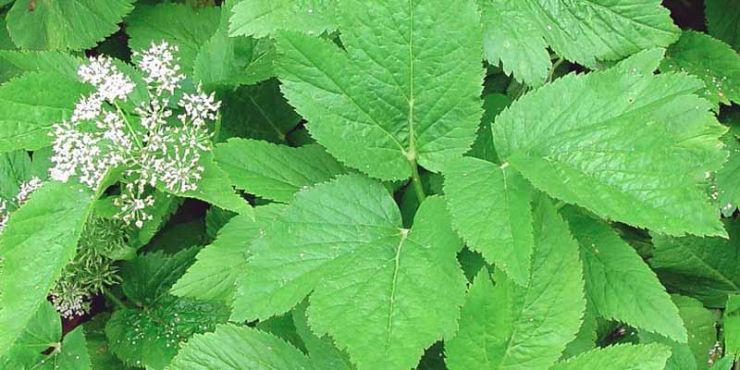
INVASIVE PLANT MANAGEMENT
The FRCC works with local groups, landowners, and others interested in controlling non-native invasive plants.
Why are we concerned about invasive plants? Part of FRCC's mission is to protect and enhance the values for which the Farmington River was designated Wild & Scenic - free-flowing water, high water quality, special scenic, recreational and habitat features. Native habitat is important to protect for many species.
Our Botanist has been leading the Invasives Program for FRCC for several years. She is available to consult with anyone interested in helping to stop the spread of invasive plants within our five-town W&S area.
INVASIVE SPECICES MANAGEMENT
Hemlock Woolly Adelgid Control : The Peoples and American Legion State Forests are extensive watershed forests bordering the upper Farmington River, and are important for natural diversity, wildlife, and recreation. These forests have a large eastern hemlock component, critical for wildlife habitat, thermoregulation, and filtering of the streams that feed into the main river. FRCC has been working with Dr. Carole Cheah, Research Entomolo
Photo of beetle release on infested hemlocks in Peoples State Forest.
Please contact FRCC if you are interested in working with us to stop the spread of invasive species, or to report a suspected outbreak in your neighborhood or property.
--------------------------------------------------------------------------------
Invasive and Potentially Invasive Plants of The
Wild and Scenic West Branch Farmington River
E. Corrigan
Updated: 22 June 2020
|
|
COMMON NAME |
SCIENTIFIC NAME* |
|
1 |
Amur Honeysuckle |
Lonicera maackii (Rupr.) Herder |
|
2 |
Autumn Olive |
Elaeagnus umbellata Thunb. |
|
3 |
Bishop’s Goutweed |
Aegopodium podagraria L. |
|
4 |
Black Locust |
Robinia pseudoacacia L. |
|
5 |
Black Swallowwort |
Cyanchum louiseae Kartesz & Gandhi |
|
6 |
Burning Bush |
Euonymus alatus (Thunb.) Sieb. |
|
7 |
Cheatgrass, Downy Brome+ |
Bromus tectorum L. |
|
8 |
Coltsfoot |
Tussilago farfara L. |
|
9 |
Common Reed |
Phragmites australis (Cav.) Trin. ex Steud |
|
10 |
Crested Late-summer Mint+ |
Elsholtzia ciliata (Thunb.) Hyl. |
|
11 |
Cypress Spurge |
Euphorbia cyparissias L. |
|
12 |
Dame’s Rocket |
Hesperis matronalis L. |
|
13 |
European Buckthorn |
Rhamnus cathartica L. |
|
14 |
Forget-me-not |
Myosotis scorpioides L. |
|
15 |
Garlic Mustard |
Alliaria petiolata (Bieb.) Cavara & Grande |
|
16 |
Glossy Buckthorn |
Rhamnus frangula L. |
|
17 |
Japanese Barberry |
Berberis thunbergii DC. |
|
18 |
Japanese Hops |
Humulus japonicus Siebold & Zucc. |
|
19 |
Japanese Knotweed |
Fallopia japonica (Houtt.) R. Decr. |
|
20 |
Japanese Stiltgrass |
Microstegium vimineum (Trin.) A. Camus |
|
21 |
Lesser Celandine |
Ranunculus ficaria L. |
|
22 |
Moneywort |
Lysimachia nummularia L. |
|
23 |
Mugwort |
Artemisia vulgaris L. |
|
24 |
Multiflora Rose |
Rosa multiflora Thunb. |
|
25 |
Narrowleaf Bittercress |
Cardamine impatiens L. |
|
26 |
Norway Maple |
Acer platanoides L. |
|
27 |
Oriental Bittersweet |
Celastrus orbiculatus Thun. |
|
28 |
Privet+ |
Ligustrum cf. obtusifolium Sieb. & Zucc. |
|
29 |
Purple Loosestrife |
Lythrum salicaria L. |
|
30 |
Ragged Robin |
Silene flos-cuculi (L.) Greuter & Burdet |
|
31 |
Reed Canarygrass |
Phalaris arudinacea L. |
|
32 |
Sheep Sorrel+ |
Rumex acetosella L. |
|
33 |
shrub honeysuckle |
Lonicera sp. |
|
34 |
Slender Snake-cotton |
Froelichia gracilis (Hook.) Moq. |
|
35 |
Spotted Knapweed |
Centaurea stoebe L. ssp. micranthos (Gugler) Hayek |
|
36 |
Tree-of-heaven |
Ailanthus altissima (P. Mill.) Swingle |
|
37 |
Yellow Iris |
Iris pseudacorus L. |
* Retrieved [June 20 , 2020], from the Integrated Taxonomic Information System (ITIS) (http://www.itis.gov).
+ Potentially Invasive
